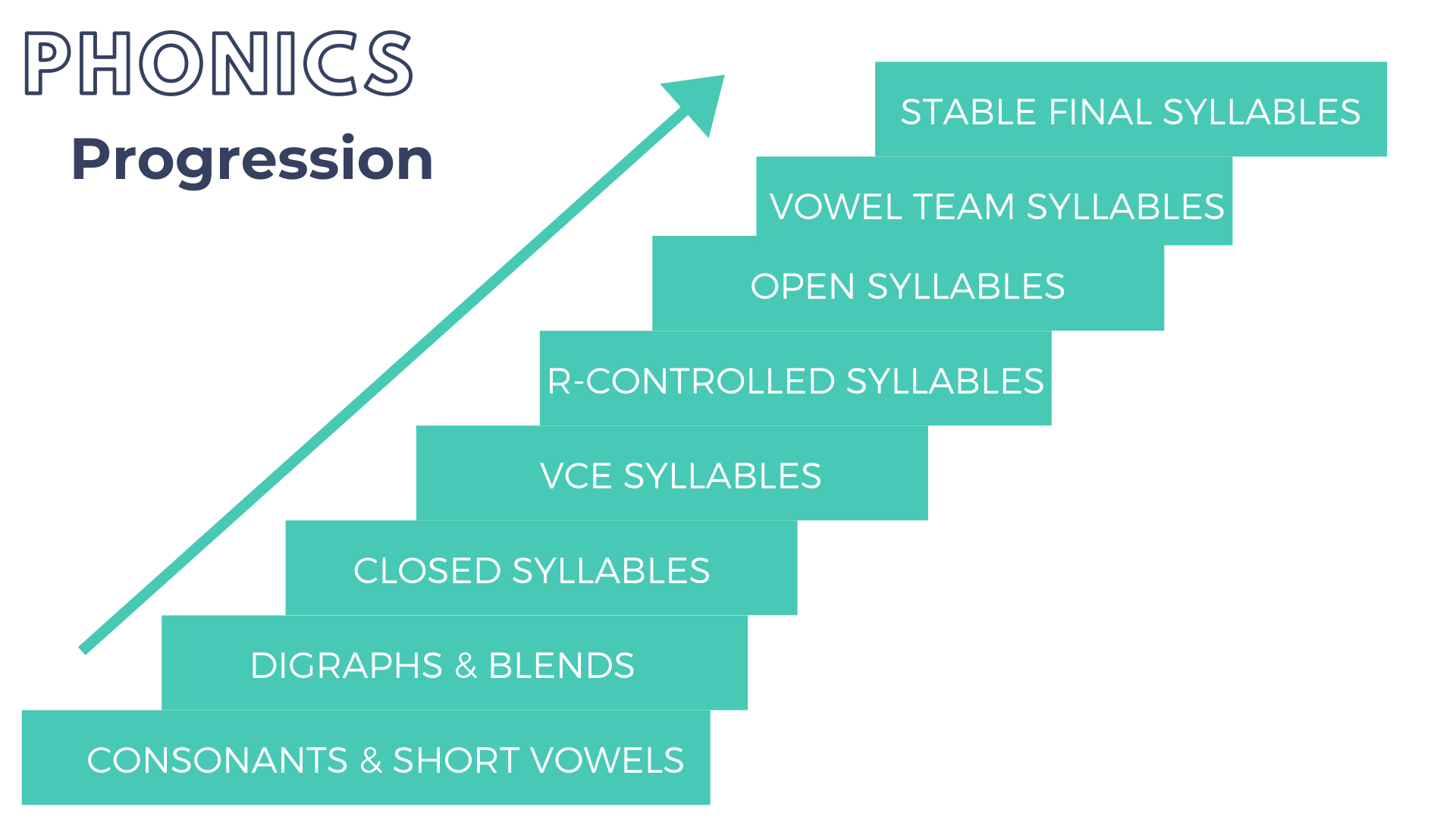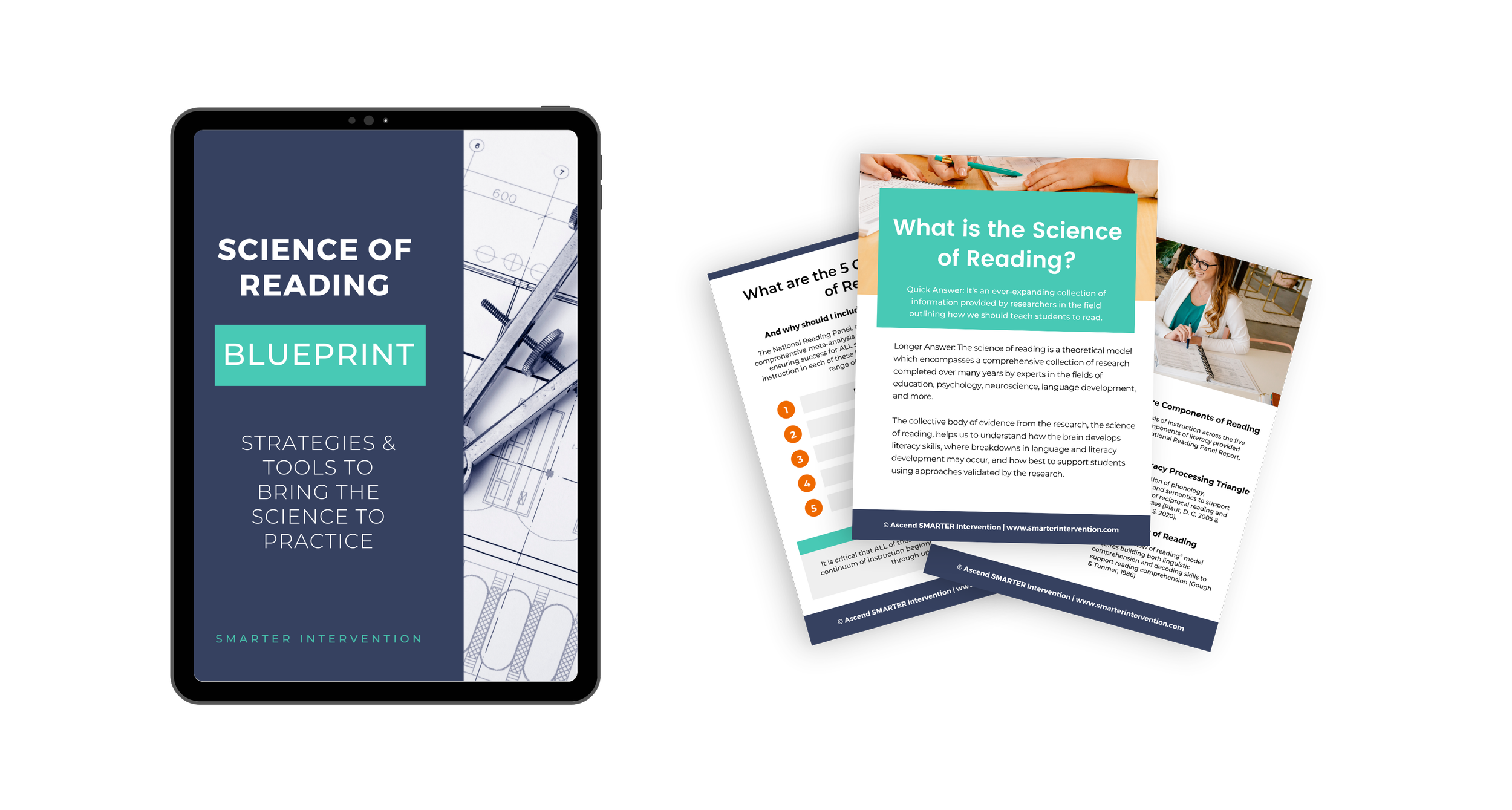Understanding the Six Syllable Types - Closed Syllables
One of the most effective practices used in evidence-based reading instruction is the process of teaching each of the syllable types and syllable division patterns.
If you have never heard of the six syllable types, don't worry - you are not alone. Check out our blog: What’s This About the Six Syllable Types.
Why teach the six syllable types?
Understanding the syllable types helps students anticipate the vowel sounds within a word. It also helps students learn to break or chunk words effectively to sound out longer words.
The Science of Reading has provided a great deal of information on the most effective, evidence-based practices in teaching reading. Teaching the six syllable types aligns with the explicit teaching of concepts. So specifically, we teach:
What is a Syllable?
A syllable is a word or part of a word with one vowel sound. Understanding this definition can help us to read and spell effectively.
As we work with students we also want to follow a systematic progression of concepts. Systematic phonics-based instruction is well-researched and has been proven to help children learn to read better than all forms of control group instruction including whole language based on quantitative meta-analyses (Ehri, L. C., Nunes, S. R., Stahl, S. A., & Willows, D. M. 2001).
A systematic progression means working from the most basic concepts and progressing to more complex concepts while continuing to systematically review the concepts taught earlier in the progression. Now, it’s important to note that our systematic progression of concepts is not necessarily the same as others - this is okay. It’s all about using a hierarchy and order of teaching that generally provides students with access to the tools they need as quickly as possible to be able to read as many words as possible.
We start our syllable type instruction with closed syllables. You can find more information on the other syllable types here:
What is a Closed Syllable?
A closed syllable is a syllable that ends in a consonant. When you find one or more consonants behind a vowel, the vowel is closed in or trapped. This makes the vowel say its short sound.
It does not matter whether there is a letter (or what letter is) in front of the vowel, we are only looking at the letter that follows the vowel.
Let’s use the word cat as an example.
This is a one-syllable word. The syllable ends with a consonant. The consonant follows the vowel, the letter “a.” Since the consonant is behind the vowel, we would say that the consonant, or letter “t,” is trapping the vowel or that the vowel is closed in. Therefore, it can only say its short sound /a/ as in apple. We would pronounce the word /c/ /a/ /t/.
Another example is the word “in.” This is also a one-syllable word. The consonant, or letter “n,” is following the vowel “i.” Since the letter “n” is behind the vowel, the vowel is closed in or trapped. When the vowel is closed in, it can only say its short sound of /i/ like in itch.
What about words with more than one syllable?
Obviously, not all of our words are made up of single syllables. But the great news is that each syllable type also has an associated syllable division pattern that helps students break up words effectively.
Let’s look at a multi-syllable word, “fantastic.” This is a three-syllable word. First, we would want our students to divide this word into individual syllables, “fan-tas-tic.” Now, let’s look at each syllable starting with “fan.” The consonant “n” is behind the “a,” which makes the first syllable a closed syllable. Since the “a” is closed in or trapped, it makes the short sound of /a/ as in apple. We pronounce this syllable as /f/ /a/ /n/. In the second syllable, “tas,” the consonant s is trapping or closing in the vowel “a.” This means the a can only say its short sound of /a/ as in apple. We pronounce this second syllable as /t/ /a/ /s/ and it is also a closed syllable. The same is true with the final syllable of “tic.” The consonant “c” is closing in or trapping the vowel “i,” so the “i” can only say its short sound of /i/ like in itch. We would pronounce the final, closed syllable as /t/ /i/ /c/.
Providing this framework for students provides them with that light-bulb aha moment that we as educators are always looking for.
Want to learn more?
Syllable Type Games & Card Decks
Find engaging games to support these skills!
What is the Science of Reading all about?
Grab our Science of Reading Blueprint!





